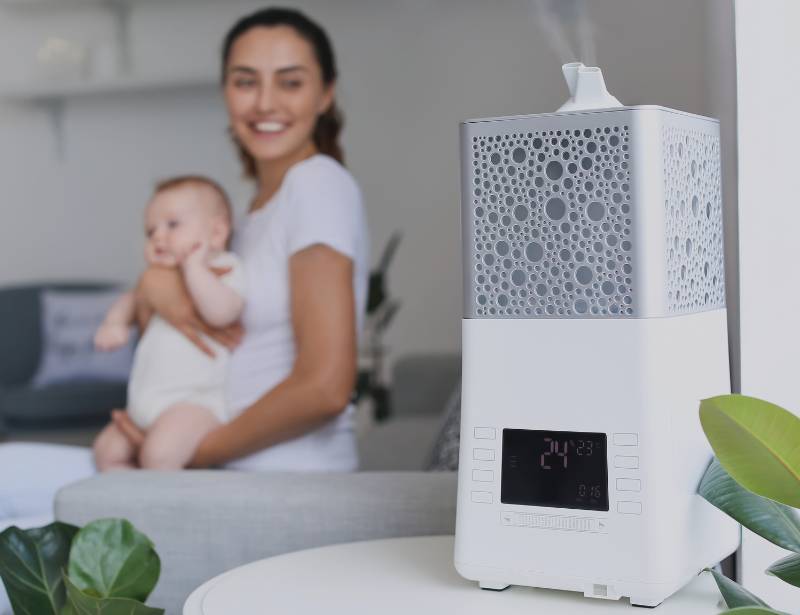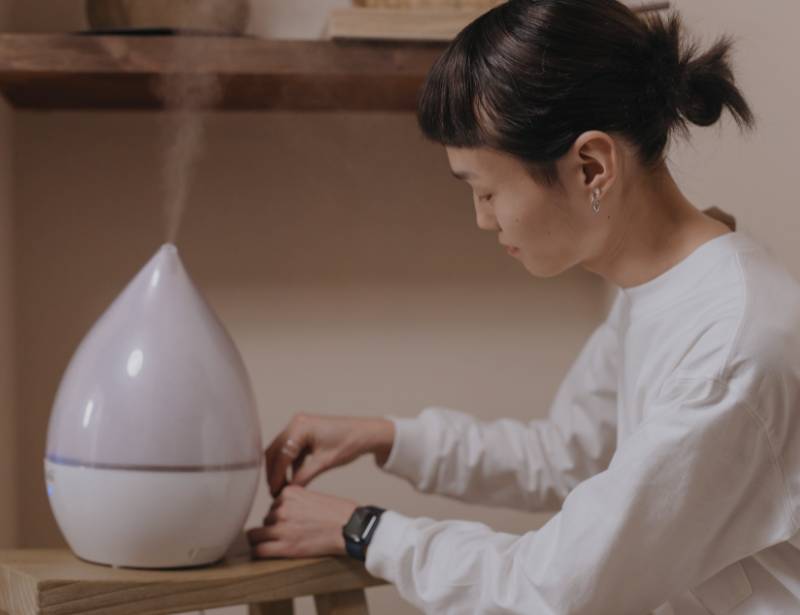
Breathe in. Breathe out. Ah, the clean, refreshing air. But wait, is it really as clean as it seems? Without regular maintenance, your humidifier could be harboring a host of microbial foes, turning the air quality in your home from refreshing to potentially harmful. That's where our step-by-step cleaning guide comes in.
In this article, we'll guide you through the importance of regular household humidifier maintenance and provide you with a comprehensive cleaning guide to ensure that your humidifier is not only functioning optimally but also promoting a healthy indoor environment. From removing mineral buildup to preventing mold growth, our step-by-step instructions will help you tackle any maintenance task with ease.
At Your Grow Depot, we understand that a clean and well-maintained humidifier is crucial for optimal air quality and overall wellness. Incorporating our expertise and knowledge in this field, we have created a guide that not only highlights the essential steps but also offers insights and tips to keep your humidifier running smoothly for years to come.
Breathe easy, my friend, and let's dive into the world of regular humidifier maintenance for a healthier home.
Why is regular humidifier maintenance important?
Humidifiers are wonderful appliances that help maintain the right level of humidity in your home, especially during dry seasons or in dry climates. However, like any other household appliance, humidifiers require regular maintenance to ensure their optimal performance and to prevent potential issues.
One of the key reasons why regular humidifier maintenance is important is to prevent the growth of harmful microorganisms, such as mold and bacteria. When humidifiers are not cleaned regularly, they can become a breeding ground for these microorganisms, which can then be released into the air you breathe. This can lead to respiratory problems, allergies, and even worsen existing conditions like asthma.
Regular maintenance also helps prevent mineral buildup in your humidifier. Water from your faucets can contain water minerals such as calcium and magnesium that can accumulate in the humidifier over time. If left unchecked, this buildup can clog the humidifier's components, affecting its efficiency and potentially causing it to break down. Similar to humidifiers that are no longer used, stagnant water breeds mold and can be a breeding ground for insects like mosquitos.
Additionally, regular maintenance ensures that your humidifier continues to operate efficiently, providing you with the desired level of humidity without wasting energy. A well-maintained humidifier not only saves you money on your energy bills but also helps prolong the lifespan of the appliance.
The benefits of a clean humidifier
Cleaning your humidifier regularly offers a range of benefits that go beyond just maintaining a healthy environment. Let's explore some of the key benefits of a clean humidifier.
1. Improved air quality: By regularly cleaning your humidifier, you can ensure that the air it releases is free from harmful microorganisms and allergens. This promotes better indoor air quality, reducing the risk of respiratory issues and allergies.
2. Reduced mold and bacteria growth: Mold and bacteria thrive in moist environments, making your humidifier an ideal breeding ground. Regular cleaning helps prevent the growth of these microorganisms, protecting both your health and the longevity of your appliance.
3. Extended lifespan of your humidifier: By removing mineral buildup and keeping the components clean, you help your humidifier operate efficiently and prevent unnecessary wear and tear. This can significantly extend its lifespan, saving you money in the long run.
4. Optimal performance: A clean humidifier ensures that it can function at its best, providing the desired level of humidity in your home. This is especially important for those who rely on humidifiers for specific health conditions or during dry seasons.
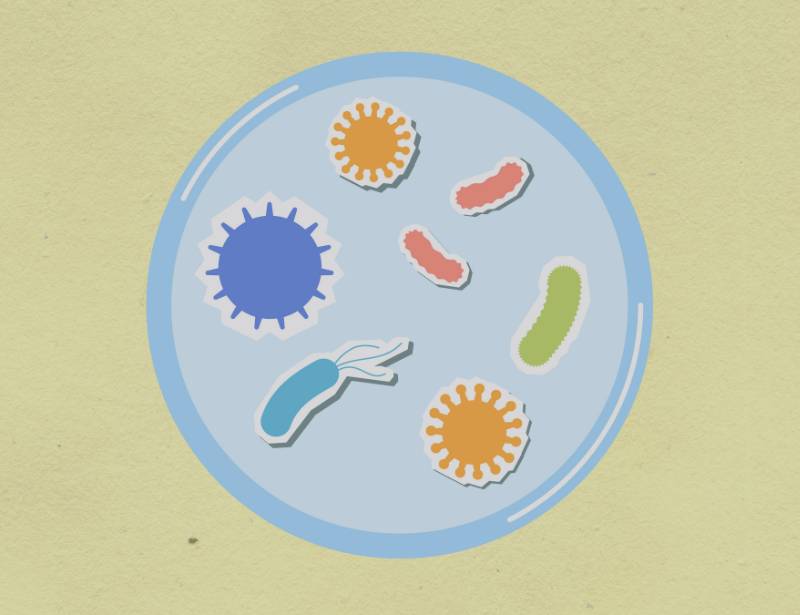
Common problems caused by neglected humidifiers
Neglecting to clean your humidifier regularly can lead to a range of problems that can compromise both the performance of the appliance and the quality of the air in your home. Here are some common issues that can arise from a neglected humidifier:
1. Mold and bacteria growth: As mentioned earlier, a dirty humidifier can become a breeding ground for mold and bacteria. These microorganisms can contaminate the air you breathe, leading to respiratory issues, allergies, and other health problems.
2. Mineral buildup: Tap water contains minerals that can accumulate in your humidifier over time. This mineral buildup can clog the appliance's components, affecting its efficiency and potentially causing it to malfunction.
3. Unpleasant odors: If your humidifier is not cleaned regularly, it can develop a musty or stale odor. This odor can be released into the air, making your home smell unpleasant.
4. Reduced humidity control: A dirty humidifier may not be able to maintain the desired level of humidity in your home. This can result in overly dry or excessively humid conditions, both of which can be uncomfortable and potentially harmful.
5. Increased energy consumption: When a humidifier is clogged with mineral deposits or has dirty components, it has to work harder to produce the desired level of humidity. This increased workload can lead to higher energy consumption and, consequently, higher utility bills.
By understanding the potential problems that can arise from neglected humidifiers, you can appreciate the importance of regular maintenance and take the necessary steps to ensure the optimal performance of your appliance.
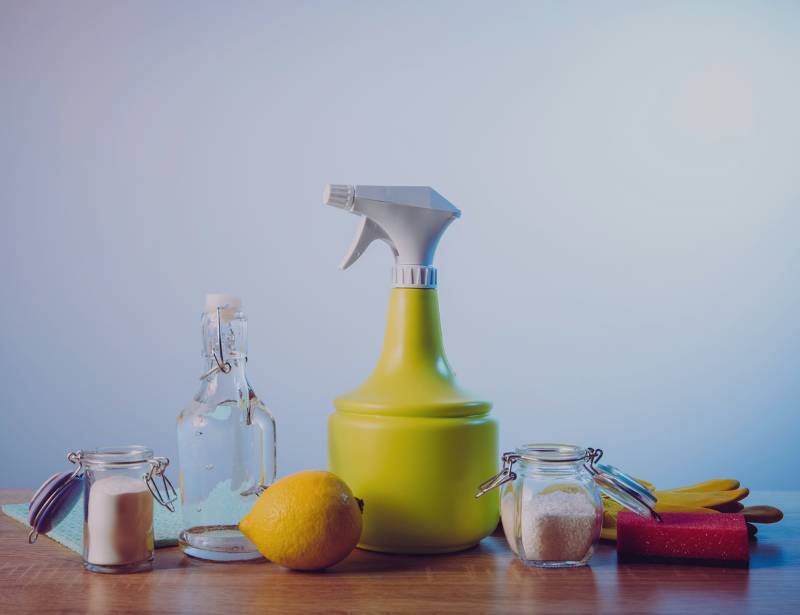
Step-by-step guide to cleaning your humidifier
Now that you understand the importance of regular maintenance, let's delve into the step-by-step process of cleaning your humidifier. Following these instructions will help you keep your humidifier in top shape and ensure that it continues to provide clean and refreshing air in your home.
Step 1: Gather the necessary supplies
Before you begin cleaning your humidifier, gather the following supplies:
- Distilled water
- White vinegar or hydrogen peroxide
- Soft-bristle brush or toothbrush
- Clean cloth or sponge
- Mild dish soap
Having these supplies ready will streamline the cleaning process and make it easier for you to tackle each step.
Step 2: Turn off and unplug the humidifier
Before cleaning your humidifier, make sure it is turned off and unplugged from the power source. This is crucial for your safety and to prevent any damage to the appliance during the cleaning process.
Step 3: Disassemble the humidifier
Carefully disassemble the different components of your humidifier. This usually includes removing the water tank, the humidifier base, and any filters or wicks. Refer to the manufacturer's instructions for your specific model if you are unsure how to disassemble it properly.
Step 4: Empty and rinse the water tank
Pour out any remaining water from the tank and rinse it thoroughly with clean or distilled water. Use a soft-bristle brush or toothbrush to scrub away any mineral deposits or residue that may have accumulated inside the tank. Rinse again to ensure all traces of dirt or cleaning agents are removed.
Step 5: Clean the humidifier base
Fill the base of the humidifier with a mixture of equal parts distilled water and white vinegar or hydrogen peroxide. Let the solution sit for about 15-20 minutes to help loosen any mineral deposits or bacteria. Afterward, scrub the base with a soft-bristle brush or toothbrush to remove any remaining residue.
Step 6: Clean filters or wicks
If your humidifier has filters or wicks, follow the manufacturer's instructions on how to clean or replace them. Some filters can be rinsed with water, while others may need to be replaced periodically. Cleaning or replacing these components is essential for maintaining the efficiency and performance of your humidifier.
Step 7: Rinse and dry all components
Thoroughly rinse all the components with clean water to remove any cleaning solution or residue. After rinsing, use a clean cloth or sponge to dry each part. Make sure all components are completely dry before reassembling the humidifier.
Step 8: Reassemble and refill the humidifier
Once all the components are dry, carefully reassemble your humidifier according to the manufacturer's instructions. Fill the water tank with distilled water, ensuring that you do not overfill it. Plug in the humidifier and turn it on, adjusting the settings to your desired level of humidity.
By following these step-by-step instructions, you can effectively clean your humidifier and maintain its optimal performance. Remember to consult your humidifier's user manual for any specific cleaning instructions or recommendations from the manufacturer.
Cleaning solutions for different types of humidifiers
Humidifiers come in various types, each requiring specific cleaning methods and solutions. Let's explore the cleaning solutions for the three most common types of humidifiers: ultrasonic, evaporative, and steam.
Ultrasonic humidifiers
Ultrasonic humidifiers use high-frequency sound vibrations to create a fine mist of water droplets. To clean an ultrasonic humidifier, follow these steps:
1. Disassemble the humidifier and remove the water tank.
2. Fill the tank with a mixture of equal parts white vinegar and distilled water.
3. Let the solution sit for about 30 minutes to dissolve any mineral deposits.
4. Use a soft-bristle brush or toothbrush to scrub the tank and any other removable parts.
5. Rinse thoroughly with clean water to remove any vinegar residue.
6. Wipe dry and reassemble the humidifier.
Evaporative humidifiers
Evaporative humidifiers use a fan to blow air through a moistened wick or filter, dispersing water vapor into the air. Here's how to clean an evaporative humidifier:
1. Unplug the humidifier and remove the water tank and wick/filter.
2. Empty any remaining water from the tank and rinse it thoroughly.
3. Fill the tank with a mixture of one gallon of water and one teaspoon of bleach.
4. Let the solution sit for about 20 minutes to disinfect the tank.
5. Rinse the tank with clean water to remove any bleach residue.
6. Use a soft-bristle brush or toothbrush to clean the wick/filter.
7. Rinse all components thoroughly and let them air dry before reassembling.
Steam humidifiers
Steam humidifiers use electricity to heat water and produce steam. Cleaning a steam humidifier involves the following steps:
1. Turn off and unplug the humidifier.
2. Empty any remaining water from the tank and rinse it thoroughly.
3. Fill the tank with a mixture of equal parts white vinegar and distilled water.
4. Let the solution sit for about 30 minutes to dissolve any mineral deposits.
5. Use a soft-bristle brush or toothbrush to scrub the tank and any other removable parts.
6. Rinse all components thoroughly with clean water.
7. Wipe dry and reassemble the humidifier.
By using the appropriate cleaning solutions and following these guidelines, you can ensure that your humidifier remains clean and effective, regardless of its type.
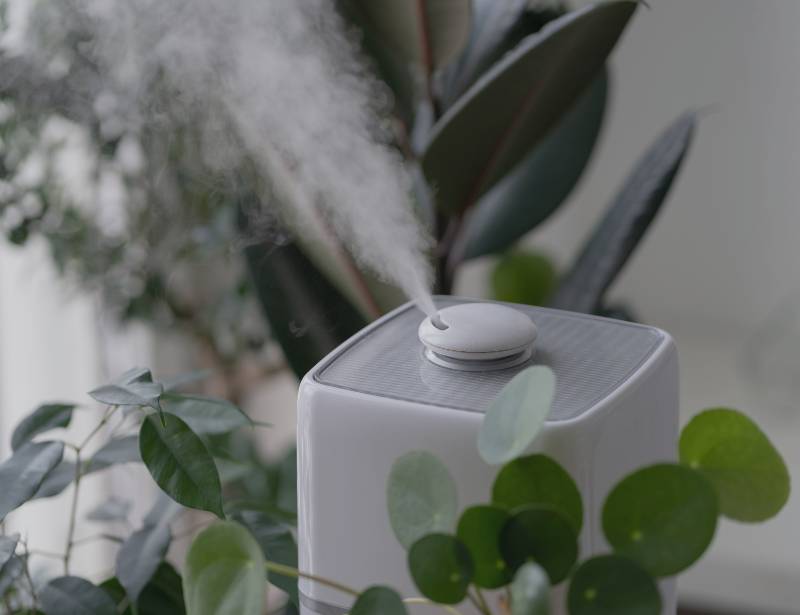
How often should you clean your humidifier?
To maintain optimal performance and prevent the growth of harmful microorganisms, it is recommended to clean your humidifier every week or two, depending on usage. However, it is essential to consult the manufacturer's instructions for your specific model, as some humidifiers may require more frequent cleaning.
If you notice any signs of mold, bacteria, or mineral buildup, it is advisable to clean your humidifier immediately. Regular maintenance and cleaning will not only keep your humidifier in top condition but also ensure that the air in your home remains clean and healthy.
Tips for maintaining your humidifier between cleanings
In addition to regular cleaning, there are several tips you can follow to maintain your humidifier's performance between cleanings:
1. Use distilled water: To minimize mineral buildup, use distilled or demineralized water in your humidifier. Tap water contains minerals that can accumulate over time, leading to clogged components.
2. Change the water daily: If possible, empty and refill the water tank of your humidifier every day. Fresh water helps prevent the growth of bacteria and keeps your humidifier functioning optimally.
3. Keep the area around the humidifier clean: Regularly dust and clean the area around your humidifier to prevent dust and debris from getting into the appliance. This will help maintain its performance and prevent clogs.
4. Monitor humidity levels: Use a hygrometer to monitor the humidity levels in your home. Aim for a relative humidity of around 40-50% for optimal comfort and to prevent excessive moisture that can lead to mold growth.
5. Store your humidifier properly: When not in use, make sure to empty and dry your humidifier thoroughly before storing it. Storing a damp humidifier can promote the growth of mold and bacteria.
By incorporating these tips into your humidifier maintenance routine, you can ensure that your appliance operates efficiently and provides clean, refreshing air in your home.

Signs that your humidifier needs professional maintenance
While regular cleaning and maintenance can prevent most issues with your humidifier, there may be instances where professional maintenance or repair is necessary. Here are some signs that indicate your humidifier may require professional attention:
1. Persistent mold or bacteria growth: If you consistently notice mold or bacteria growth in your humidifier, even after thorough cleaning, it may be time to consult a professional. They can assess the situation and recommend appropriate solutions.
2. Unusual noises or smells: If your humidifier starts making strange noises or emitting unpleasant odors, it could be a sign of a mechanical issue. A professional can diagnose the problem and provide the necessary repairs.
3. Decreased performance: If your humidifier is no longer maintaining the desired level of humidity in your home or is not working as efficiently as before, professional maintenance may be required. They can identify and resolve any underlying issues.
4. Visible damage or leaks: If you notice any visible damage, cracks, or leaks in your humidifier, it is advisable to have it inspected by a professional. They can determine the extent of the damage and recommend appropriate repairs or replacements.
Professional maintenance ensures that your humidifier receives the specialized care it needs, extending its lifespan and optimizing its performance. If you encounter any of the above signs, it is best to seek professional assistance rather than attempting repairs yourself.
Frequently asked questions about humidifier maintenance
1. Can I use tap water in my humidifier?
While tap water is generally safe to use, it contains minerals that can lead to mineral buildup in your humidifier. To minimize this buildup, it is advisable to use distilled or demineralized water.
2. Can I use bleach to clean my humidifier?
Bleach can be used to disinfect your humidifier, but it should be used in the recommended dilution and rinsed thoroughly afterward. Consult your humidifier's
Conclusion: The key to a healthy and efficient humidifier
Q: How often should I clean my humidifier?
A: Regular maintenance is essential for the optimal performance of your humidifier. It is recommended to clean your humidifier at least once a week, especially during periods of heavy use. However, if you notice any signs of mineral buildup or mold growth, it is crucial to clean it immediately.
Q: What are the risks of not cleaning my humidifier regularly?
A: Neglecting regular maintenance can lead to several problems. First and foremost, mineral deposits can accumulate in the water tank and on the internal components of the humidifier, reducing its efficiency. Additionally, stagnant water and high humidity provide the perfect breeding ground for mold and bacteria, which can be released into the air, potentially causing respiratory issues and allergies.
Q: What supplies do I need to clean my humidifier?
A: To clean your humidifier, you will need distilled water, white vinegar, a soft brush or cloth, and a disinfecting solution. It's essential to avoid using harsh chemicals or abrasive materials that can damage the humidifier.
Q: How do I clean the water tank?
A: Start by unplugging the humidifier and emptying the water tank. Rinse it with distilled water to remove any loose debris. Then, fill the tank with a mixture of distilled water and white vinegar, using a ratio of 1:1. Let the solution sit for about 30 minutes, ensuring that it covers all the internal surfaces. Afterward, scrub the tank with a soft brush or cloth to remove any mineral buildup. Rinse thoroughly with distilled water before refilling.
Q: How do I clean the humidifier's filter?
A: If your humidifier has a filter, it's essential to clean or replace it regularly, as instructed by the manufacturer. To clean a reusable filter, remove it from the humidifier and rinse it under running water to remove any debris. If the filter is heavily soiled, soak it in a mixture of water and a disinfecting solution, following the manufacturer's instructions. Allow the filter to dry completely before reinserting it into the humidifier.
Q: How can I prevent mold growth in my humidifier?
A: Mold growth can be prevented by following a few simple steps. First, ensure that your humidifier is placed on a flat, stable surface and is not in direct contact with any walls or furniture. Clean and dry the humidifier thoroughly after each use, ensuring that there is no stagnant water left inside. Additionally, using distilled water instead of tap water can help reduce the risk of mineral buildup and mold growth.
Q: Is there anything else I should do to maintain my humidifier?
A: In addition to regular cleaning, there are a few other maintenance tasks that can help keep your humidifier in top condition. Regularly check the humidifier's water level and refill it as needed to prevent it from running dry. If your humidifier has a removable tray or reservoir, clean it regularly to prevent the growth of bacteria or mold. Finally, consider using a hygrometer to monitor the humidity levels in your home and adjust the humidifier settings accordingly.

